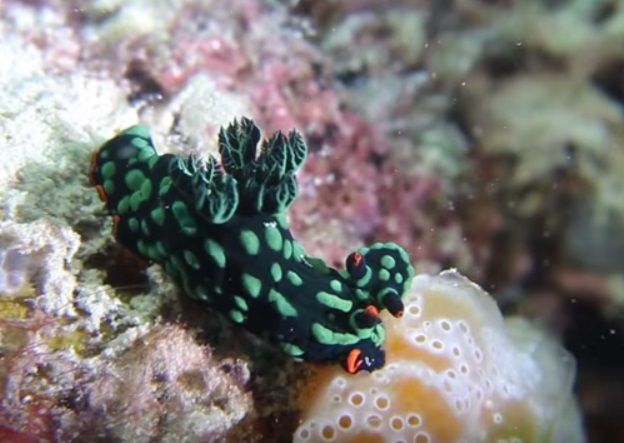See the world's first two-headed slug discovered by divers

Digital Reporter
Sunday, August 16, 2015, 2:53 PM - Divers have found what is believed to be the world's first two-headed sea slug.
The strange creature, also known as a nudibranch, was discovered off the coast of Sabah in eastern Malaysian Borneo by diver Nash Baiti.
The world's 1st TWO-HEADED sea slug was found in Borneo! It's neon and 'toxic' #strangescience https://t.co/3wvCqlWgSx pic.twitter.com/0q8nSmc5KK
— Krystian Science (@KrystianScience) August 15, 2015
Another interesting slug that took the Internet by storm in July was the Jorunna parva -- a sea slug that looks like a furry bunny. A mysterious spaghetti-like sea creature was also newly discovered 4,000 feet under water off the Angola coast.
The dark waters of the ocean are filled with mysterious beings, but in early July even experienced divers were unprepared for what appeared to be a giant glittering orb floating off the coast of Turkey.
The two-headed slug's abnormality may have been caused by a birth defect or pollution, marine experts suggest. In addition to have two heads, the slug is a hermaphrodite and possesses both male and female sex organs.

Measuring at an inch-long, the creature belongs to the species nembrotha kubaryana and can grow up to five inches long. The slug's bright neon green and orange colours, warns predators of their toxicity.
The slugs feed on sea squirts, which appear to have bag-like bodies. They remove and store the sea squirts' chemical compounds and once threatened by predators, the slug releases the toxic chemicals as a slimy mucus.
Baiti brought the creature to nudibranch expert and marine biologist Clay Bryce of the Western Australian Museum in Perth.
"I have never seen another two-headed marine creature like this before and I have spent 10,000 hours underwater chasing nudibranches," Bryce told U.K.'s Daily Mail. "Usually this sort of deformity sets the animal up for an early death, but it does appear to be adult of at least sub-adult so perhaps this is a case of two heads better than one."
Source: Daily Mail | Digital Journal
Related video:Bizarre sea creatures you didn't know existed



